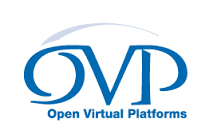Crafting a Comprehensive White Paper: Open Virtual Platforms (OVP) for VLSI Systems
Introduction
In the realm of Very-Large-Scale Integration (VLSI) system design, the complexity and scale of modern chips necessitate efficient and accurate simulation and verification. Open Virtual Platforms (OVPs) have emerged as a powerful tool to address these challenges. By providing a virtual platform that models the hardware and software components of a system, OVPs enable early software development, system-level validation, and performance analysis.
Understanding OVPs
An OVP is a virtual platform that simulates a hardware system at a high level of abstraction. It consists of a set of virtual components, such as processors, memory, peripherals, and interconnects, that interact with each other. OVPs can be used to:
- Early Software Development: Develop and test software before the actual hardware is available.
- System-Level Validation: Verify the functionality and performance of the entire system, including hardware and software.
- Performance Analysis: Analyze the performance bottlenecks and optimize the system design.
- Hardware/Software Co-Verification: Ensure the correct interaction between hardware and software components.
Key Components of an OVP
- Virtual Processor Models:
- Accurate models of processor architectures, including instruction set simulators (ISS) and cycle-accurate simulators (CAS).
- Support for a wide range of processor architectures, such as ARM, MIPS, and PowerPC.
- Platform Models:
- Models of system-level components, including memory subsystems, peripherals, and interconnects.
- Customizable to represent different system configurations and topologies.
- Software Tools and Frameworks:
- Tools for building and configuring OVP platforms.
- Frameworks for running software on the virtual platform, such as operating systems, device drivers, and applications.
Benefits of Using OVPs
- Accelerated Time-to-Market: Early software development and system-level validation reduce development time.
- Improved Design Quality: Early identification and resolution of design issues.
- Reduced Hardware Prototyping Costs: Virtual prototyping reduces the need for physical hardware prototypes.
- Enhanced System Performance: Optimize system performance by analyzing bottlenecks and making design changes.
Challenges and Limitations of OVPs
- Accuracy: The accuracy of OVPs depends on the fidelity of the models used.
- Performance Overhead: Simulating complex systems can be computationally intensive.
- Model Complexity: Developing accurate and detailed models can be time-consuming.
Future Trends and Emerging Technologies
- Hardware-Accelerated OVPs: Utilizing hardware accelerators to improve simulation performance.
- Machine Learning-Based OVPs: Leveraging machine learning techniques to create more accurate and efficient models.
- Integration with Formal Verification: Combining OVPs with formal verification tools to increase verification coverage.
References
- OVP World: http://imperas.com/imperas-riscv-solutions
- Synopsys Virtualizer: https://www.cadence.com/en_US/home/explore/virtual-platform.html
Conclusion
OVPs have become an indispensable tool for modern VLSI system design. By providing a virtual environment for system-level validation and software development, OVPs enable engineers to accelerate time-to-market and deliver high-quality products. As technology continues to advance, OVPs will play an even more critical role in shaping the future of VLSI design.
Would you like to delve deeper into a specific aspect of OVPs, such as model development, performance optimization, or integration with other tools?



